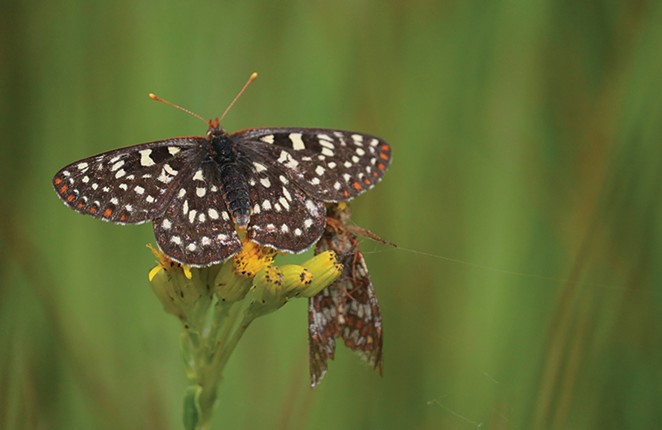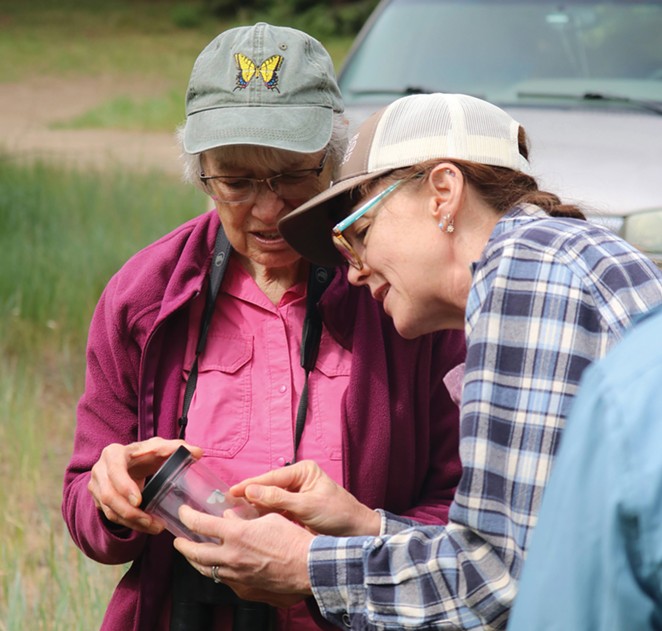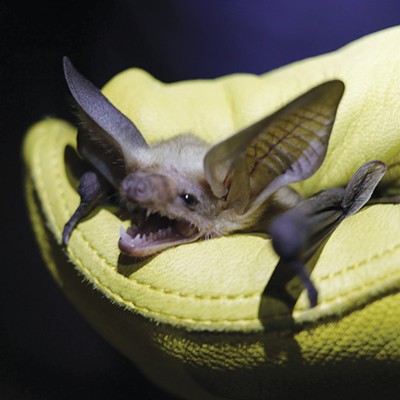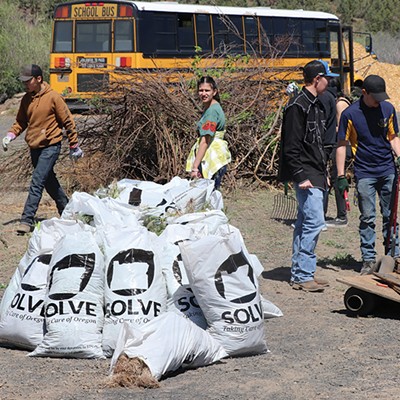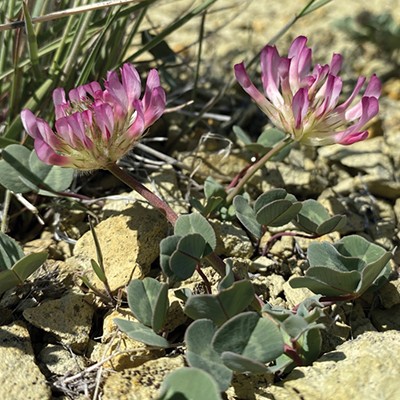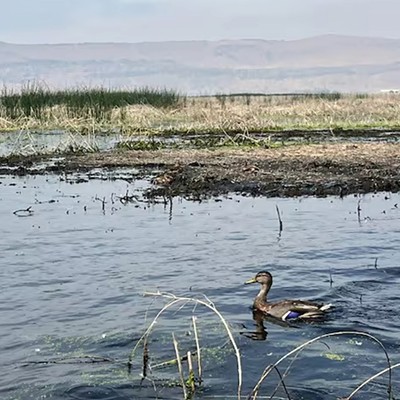What's a good way to learn about butterflies? Join a butterfly count sponsored by the North American Butterfly Association.
That's exactly what my wife, Raven, and I did this past month. We volunteered to "help out" on the 34th annual Ochoco Butterfly Count, organized by lepidopterist expert Sue Anderson through the Lane County Butterfly Club. By "help out," I mean not get in the way, try to catch some butterflies or shoot some photographs to aid in identifying the various species that occur in the Ochoco Mountains.
About 20 volunteers met at the old Ochoco Ranger Station on an overcast morning. Although the temperatures were good for butterflying, the lack of sunshine was a concern to Anderson and those present, who knew more about butterfly activity than we did. Amanda Egertson, Deschutes Land Trust's stewardship director and expert lepidopterist, joined our group of 10 to help with identification.
"Butterflies need warmth and sunshine to be active," said Anderson. This simple statement would prove fruitful when the sun finally did make an appearance.
From the ranger station, our group headed to the first site, a small meadow just off Forest Road 42 and beyond the old Mill Creek CCC camp commemorative plaque. Here we caught or viewed several butterflies, including common ringlets and field crescents, but the butterflying was sparse. Some nearby campers asked what we were doing wandering around in the long-grass meadow with butterfly nets, binoculars and cameras as we swung our nets like lacrosse players, trying to capture the few butterflies fluttering about.
With a slow start, we continued and stopped at several locations along FR 42. One stop, a thick patch of spreading dogbane in bloom, should have been chock full of butterflies but only yielded a few, along with a clearwing sphinx moth nectaring on the dogbane flowers.
We pushed on, recording species and numbers encountered at the various stops. The Lookout Mountain trailhead area produced western sulphur, field crescent, purplish copper, gray hairstreak and several other species — a big improvement from our early start.
Our lunch stop was a side road on the western edge of Big Summit Prairie, a prime wildflower area. That's when the sun finally began to shine. What a difference! Suddenly, we were catching blues and coppers, checkerspots and crescents and seeing mourning cloaks and swallowtails in flight. Our slow day hit the accelerator in terms of numbers and species.
Another stop brought us to a small marshy area lined with willows and full of buckwheats in bloom. We captured and identified several more species, including a silver-bordered fritillary. "That's one of our sensitive species on the forest," said Shelley Borchert, Ochoco National Forest wildlife biologist who was also part of the group. This fritillary has silver spots on the undersides of the wing and is known in the Ochocos at only a few locations.
Even though we were newbies on the count, we caught on, mostly, to capturing butterflies in the nets which aided in their identification. Otherwise, it's tough to ID a small butterfly in flight, trying to discern minute markings on their wings.
Our second-to-last stop, in a small meadow fed by a tickling spring, was filled with wildflowers and proved to be a bonanza spot for butterflies. We caught a Mormon fritillary, Sonoran skipper and a Melissa blue, and saw several large orb-weaver spiders capturing moths and butterflies, as well, in their webs strung between the flowers. This is where I learned a group of butterflies is called a "kaleidoscope," a fitting term for these colorful creatures.
Eventually, we met the other group at the bridge around 4pm, when the butterfly activity had waned. Though we missed the meet-up tally at a Prineville restaurant, we realized that butterflying is extremely fun but tiring. Who knew?
In the meantime, while awaiting the totals, I've already signed up for an upcoming count. Anderson will be leading the 39th annual Metolius Butterfly Count on July 13 in the Camp Sherman area. I look forward to contributing to this community-science project and hopefully not getting in the way.

